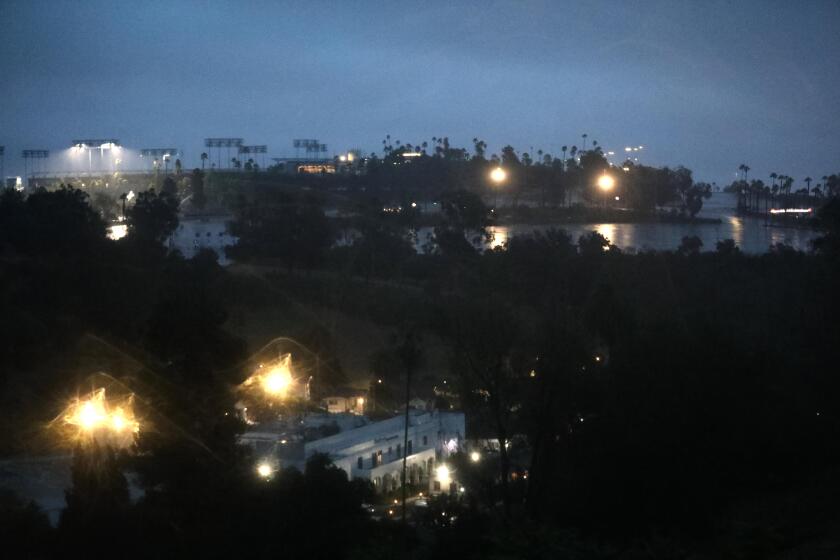Hilary was billed as a monster storm. Why it battered some areas but spared others
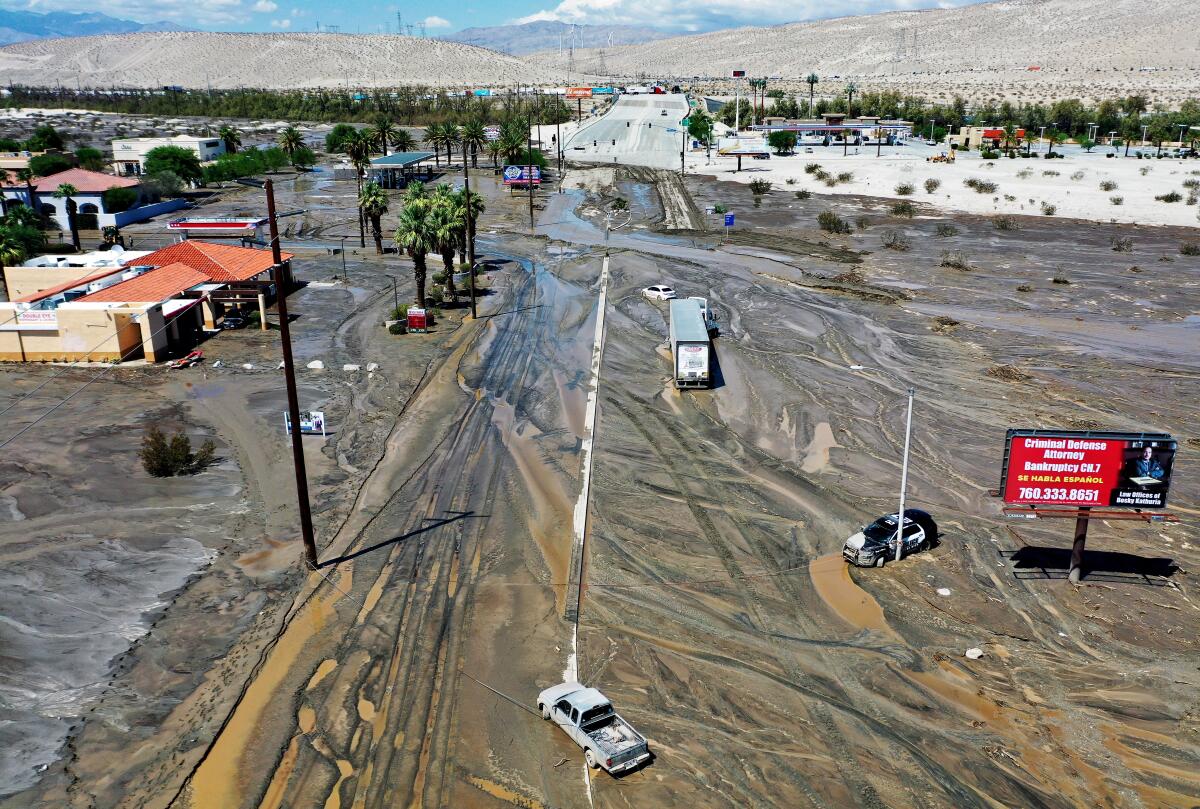
- Share via
As predicted, Tropical Storm Hilary dumped record rain on Southern California and caused significant flooding in inland areas.
But it still had some tricks up its sleeves.
Hilary — the first tropical storm to hit the region in decades — hit some areas much harder than others. Southern California’s mighty mountains played a role in its path.
And because the storm’s entrance into California was so unusual, Hilary acted in ways that tropical storms wouldn’t along the Gulf Coast.
Time-lapse satellite imagery shows Tropical Storm Hilary passing over Southern California on Sunday. (Images from NOAA; video by Sean Greene / Los Angeles Times)
Here is a rundown:
Why some areas were hit harder than others
By Monday, it was clear some areas were hit harder than others.
As predicted, Hilary dumped a lot of rain and inland, desert and mountain areas took the brunt of it. But one coastal area, San Diego, once also considered at higher risk, perhaps fared a little better than expected, as Hilary’s track moved eastward more than initially expected.
The trail of Hilary took an interesting turn Sunday night as the storm made a trek from the Inland Empire to the heart of Los Angeles.
Some areas of Southern California were definitely battered, especially the Coachella Valley, forcing lengthy closures of Interstate 10 in the Palm Springs area, and in the Eastern Sierra shutting a 120-mile stretch of U.S. Highway 395, the main road connecting Mammoth Mountain to the Southern California metro area.
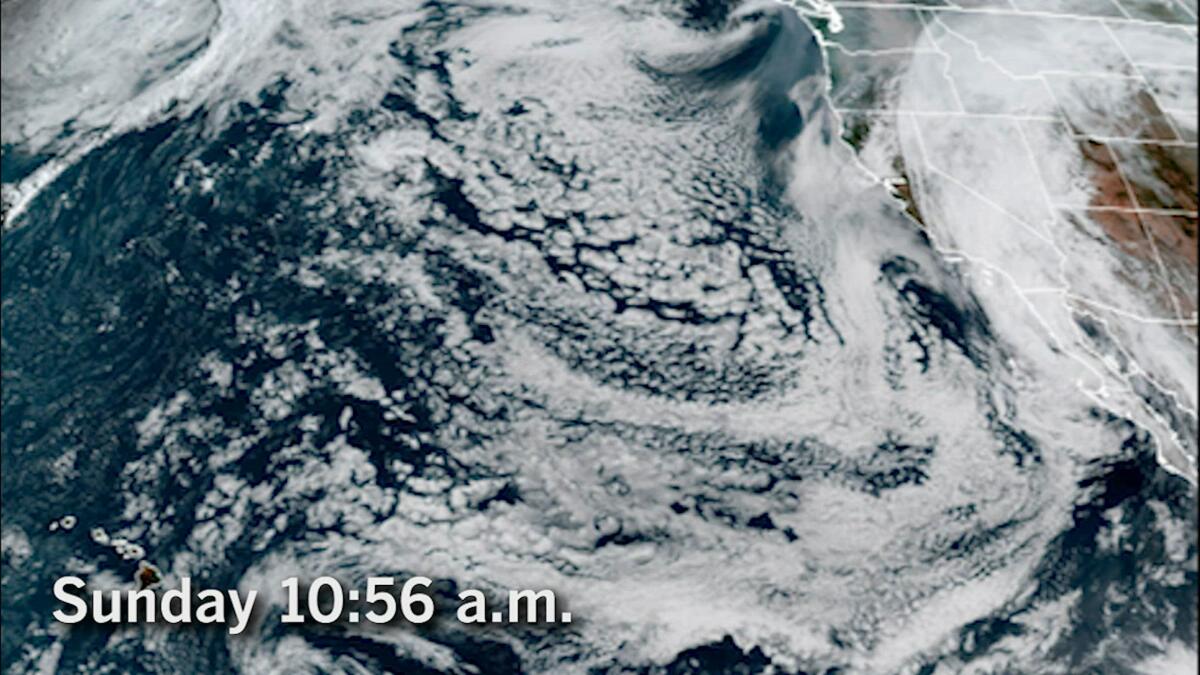
There have been reports of people stuck on roofs in Cathedral City, where roads remained awash in a thick layer of mud and water Monday. Death Valley National Park received 2.2 inches of rain within a day — a devastating amount that broke the all-time wettest day record. The amount also means Death Valley got as much rain in a single day as it on average gets in an entire year.
But there are other places that saw less devastation. Parts of coastal San Diego, Orange and Los Angeles counties saw high amounts of rain for a single day — especially considering that it’s August, in the middle of the dry season — but not unprecedented for what might have occurred during a strong winter storm.
In fact, rainfall forecasts were generally within expectation in a number areas. San Diego was forecast to receive roughly 2 inches of rain; it received 1.82. Downtown L.A. was forecast to receive around 2 inches of rain; it received 2.99 inches.
Palm Springs was forecast to get 4 to 5 inches of rain — as much rain as it on average gets in a year — and has received 3.23 nches.
There were especially eye-popping totals for Mt. San Jacinto, which received 11.74 inches, “which is incredible for basically 24 hours worth of rainfall,” said Brandt Maxwell, meteorologist with the National Weather Service’s San Diego office.
“And of course, with the steep rocky slopes — in fact, it’s one of the steepest slopes in the Lower 48 [states] — you go up 10,000 feet in less than 10 miles — that water just went right down the mountain and right into the Coachella Valley,” Maxwell said.
Rainfall from the San Bernardino Mountains also drained into the Coachella Valley through the Whitewater River, which crested at 46 feet in Rancho Mirage, located southeast of Palm Springs. “That’s an incredible amount of water flowing through there,” Maxwell said, contributing to flooding a section of Interstate 10.
Being close to the eye offered some shelter
But some highly populated areas of San Diego County, which was thought to be an area of potential concern due to its proximity to the projected eye of Hilary, was probably sheltered from more significant winds due to the storm’s move eastward as it passed by.
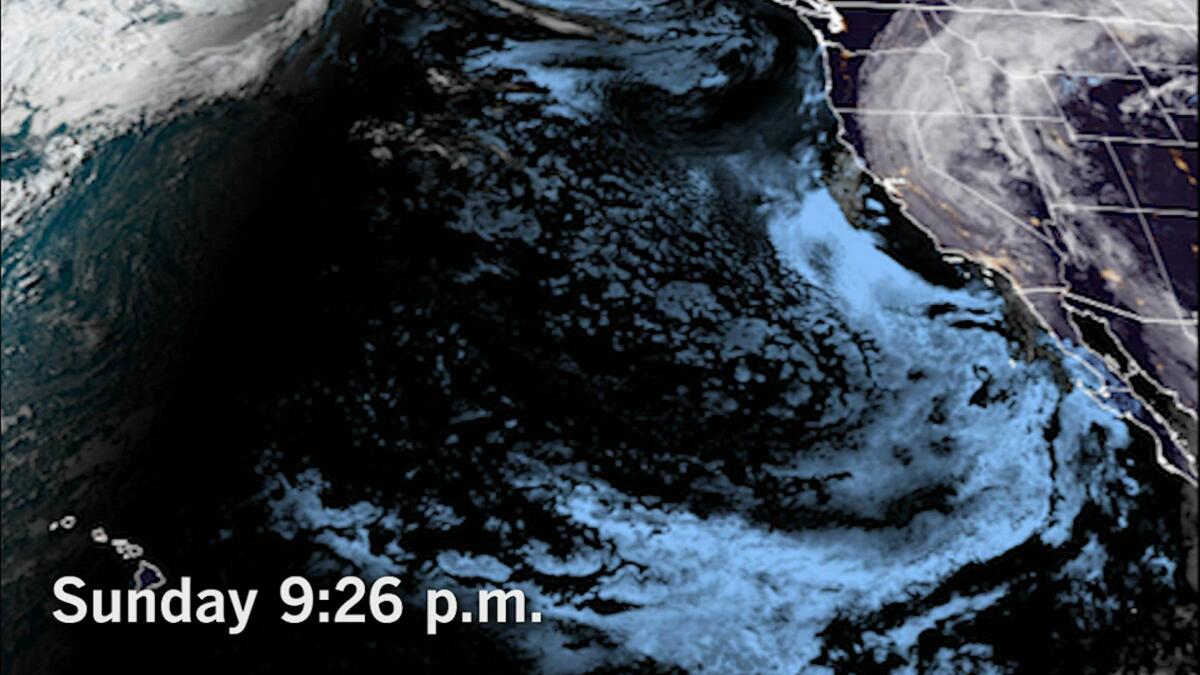
The actual path of the storm “put it kind of more over the foothills, in the mountains,” Maxwell said.
La Jolla, on San Diego’s coast, had one reading of a 51 mph gust — which is substantial — but in places farther inland, where many people live, the winds were more like 20 to 30 mph, with a few higher gusts, Maxwell said.
Some areas of L.A. County received highly unusual amounts of rain. Many rainfall records were broken for any single day in August. And Hilary’s rainfall dump even resulted in the breaking of records at a number of weather stations for the entire month of August.
Of course, there are many areas of Southern California that didn’t see catastrophic damage. But the weather service never made that kind of prediction.
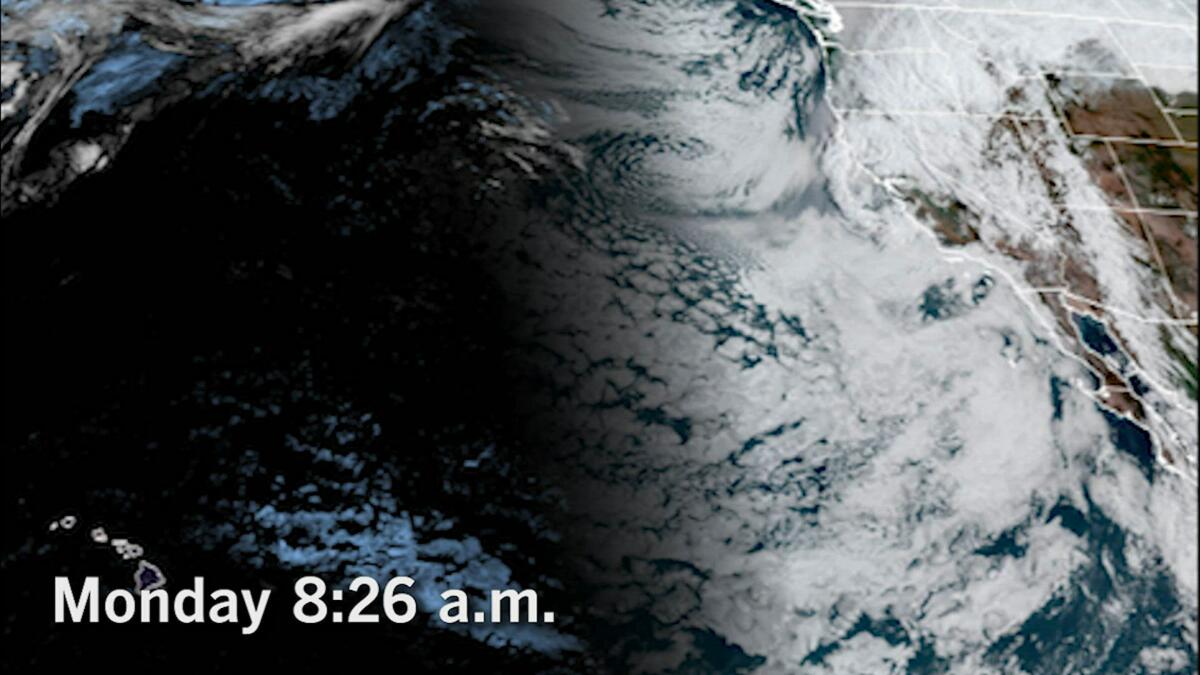
“Not everywhere, not every square meter of L.A. County was flooded,” National Weather Service meteorologist Joe Sirard said.
But there were nonetheless a number of areas of L.A. County that did see damaging floodwaters, including a commercial stretch of Melrose Avenue in Los Angeles. The Los Angeles Fire Department received reports of 22 minor mud flows; Highway 138 in the Antelope Valley was closed Sunday by running water and debris flows; and flooding on the 5 Freeway in Sun Valley severely limited access to northbound lanes early Monday.
Steady rain helped avoid great disaster
Daniel Swain, a UCLA climate scientist, said conditions of the storm just didn’t produce those some of the more extreme rainfall rates that were forecast as a outside possibility, which he said helped minimize flooding damage.
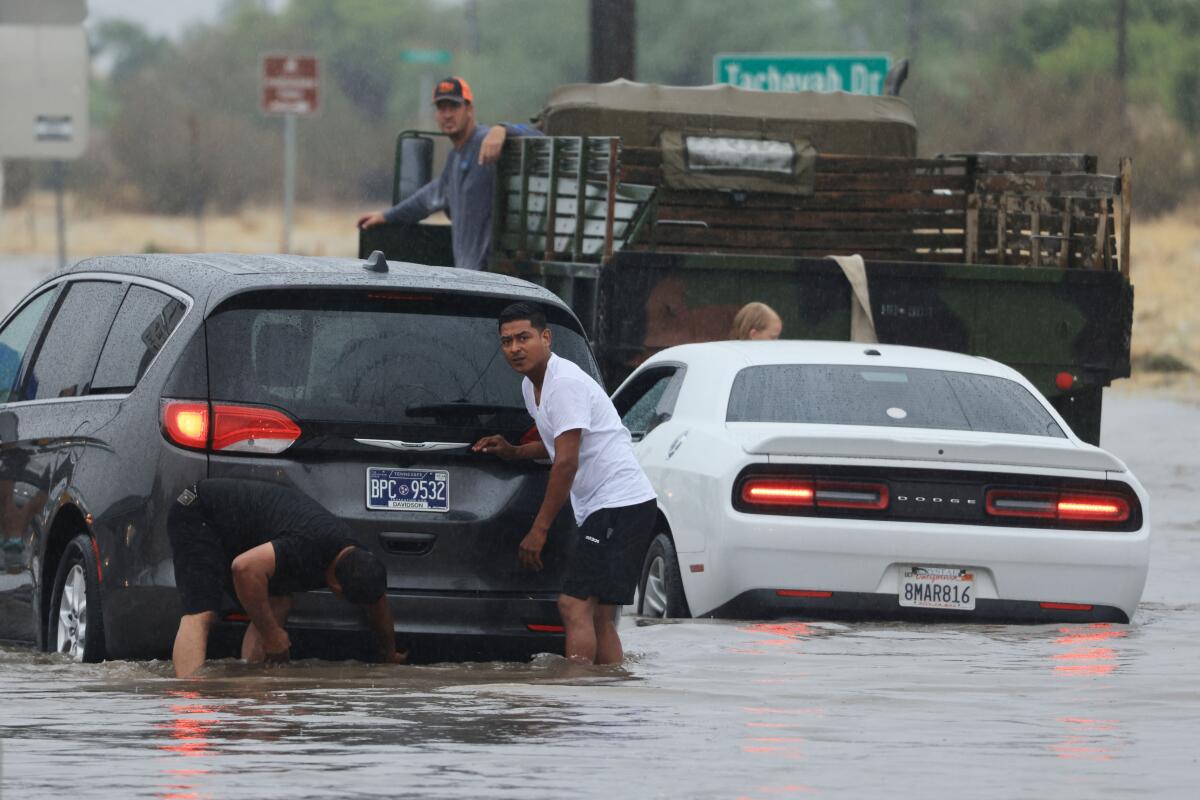
Instead of 3 to 4 inches an hour, most areas saw rates closer to 1 to 2 inches — more manageable. However, Swain still called the amount of rain that fell unprecedented.
“Numerous locations in Southern California saw their wettest August day on record … and many locations set new records for the wettest day in summer,” Swain said.
Another factor that helped is that the rainfall fell at more steady rates, instead of the brief bursts of the same amount of rainfall that would’ve worsened flooding concerns.
“Even though the same amount of water fell overall in many cases, it didn’t fall as quickly as had been feared,” Swain said, avoiding those “catastrophic” flooding concerns.
He said he expects there was some extreme flooding in some more remote areas, noting there has been little reported from Death Valley, as it was evacuated.
“The hardest-hit areas are often the most inaccessible ones,” Swain said.
Mountain range helped guide Hilary
What made Hilary’s movements so unusual compared with a hurricane hitting the Gulf Coast is that Southern California has many mountain ranges.
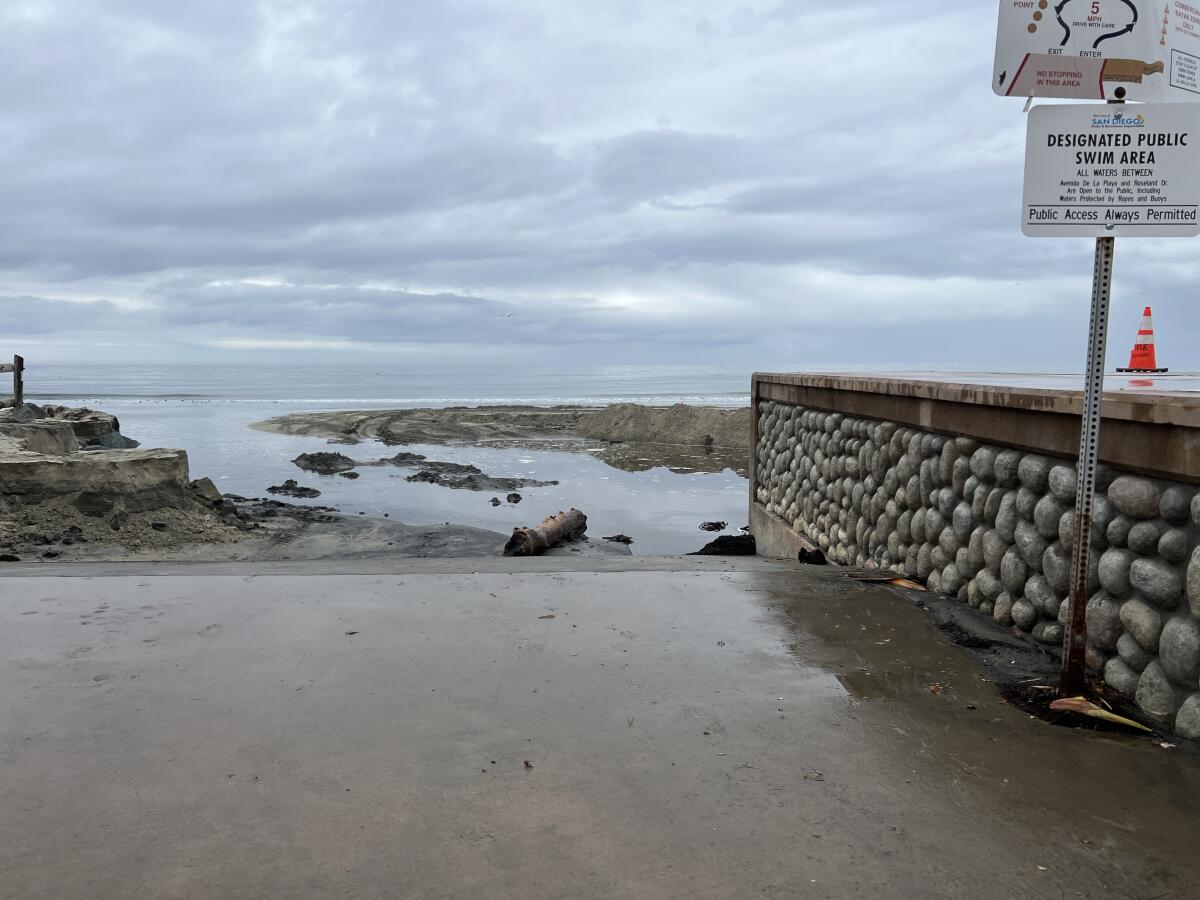
“When Hilary came ashore, it interacted with the mountain barriers,” and an area of low pressure developed right along the Ventura County coast, separate from the main circulation of Hilary, Sirard said. As a result, there was high-intensity rainfall in an area of eastern Ventura County and western L.A. County for a period late Sunday.
“As tropical storms move ashore, especially when they hit a mountainous terrain, the circulation kind of gets torn apart and disorganized,” Sirard said.
Times staff writers Susanne Rust, Brittny Mejia, Louis Sahagún, Hannah Wiley and Ruben Vives contributed to this report.
More to Read
Sign up for Essential California
The most important California stories and recommendations in your inbox every morning.
You may occasionally receive promotional content from the Los Angeles Times.
